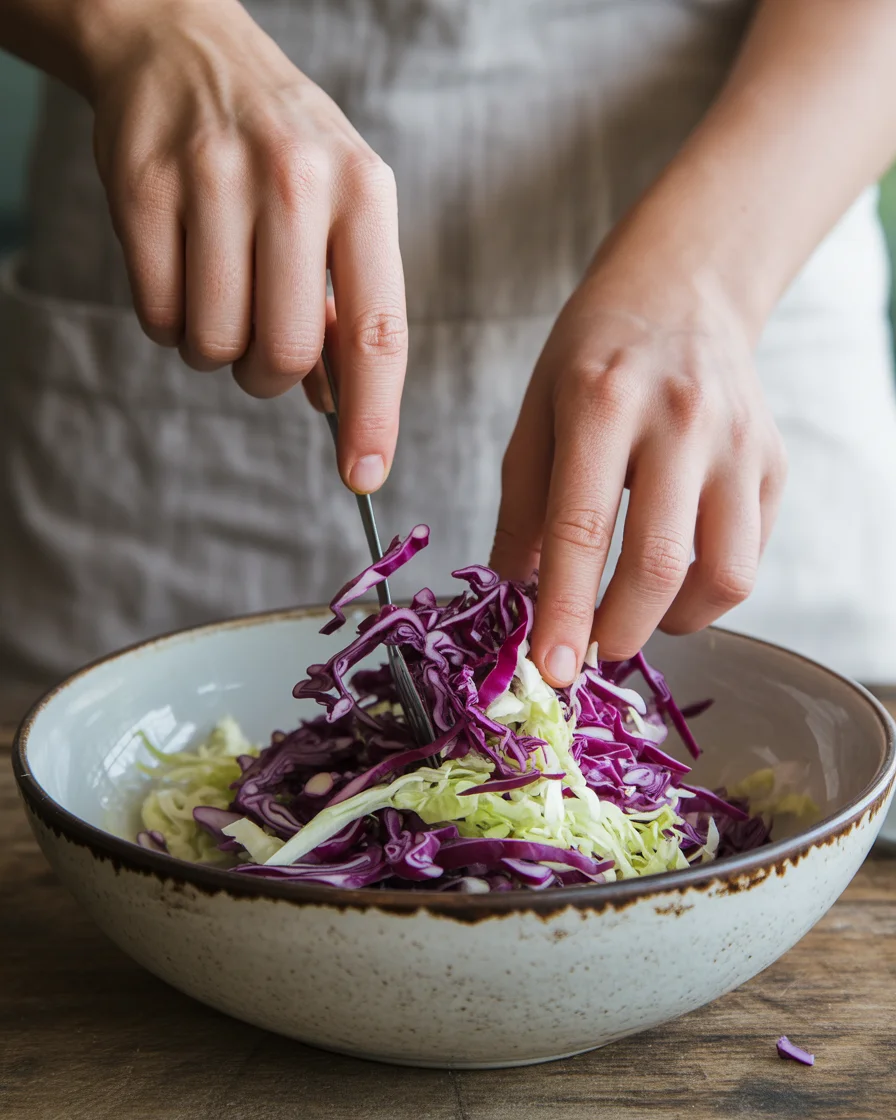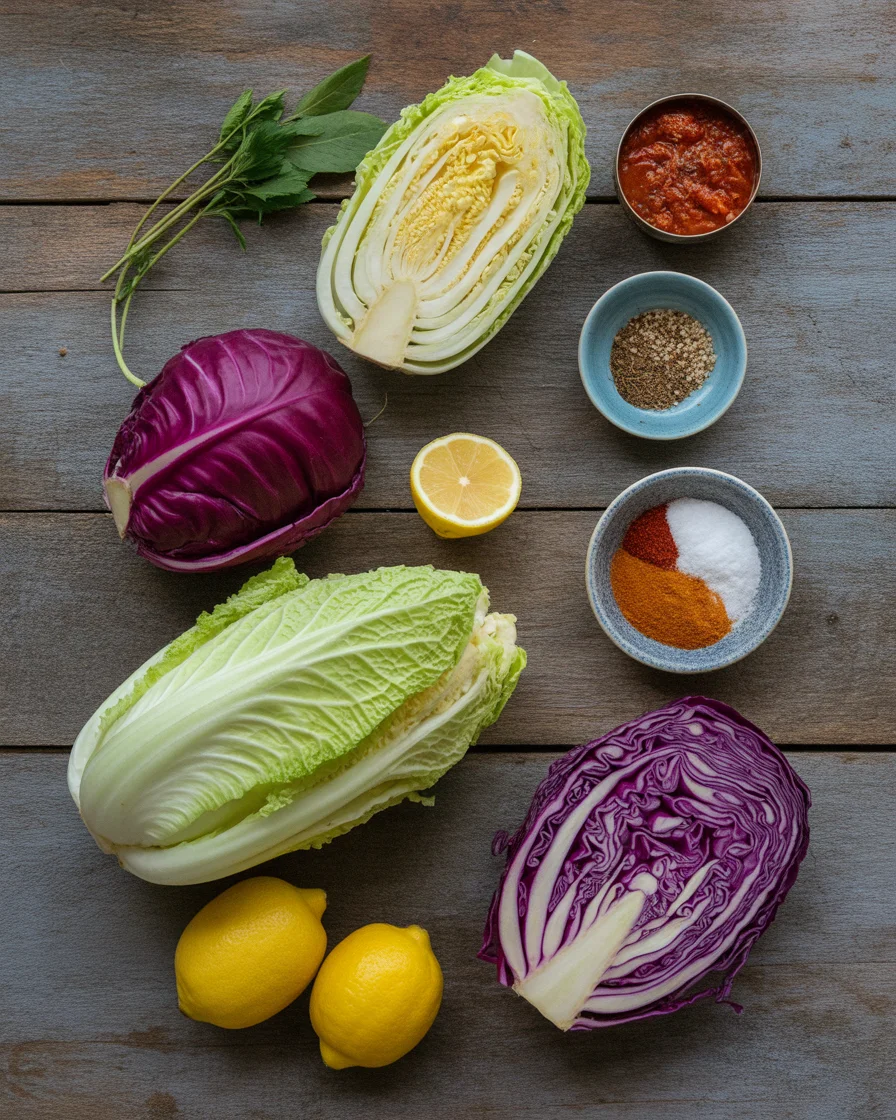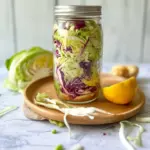Paleo Low-Sodium Kimchi is my happy place when I want bold flavor without blowing up my salt goals. If you crave that crunchy, tangy bite but want a lighter hand with sodium, you’re in the right kitchen. I’ve been tinkering with this for years, and my jar of fermented goodness is now a regular on our table. I’ll walk you through how I get a bright, clean tang, plenty of umami, and just enough heat. We’ll also chat about banchan, a quick Korean cucumber salad that pairs perfectly, and smart low-sodium benefits. Stick around for easy tips, a few friendly links, and practical answers to common questions.
What is banchan?
If you’ve ever sat down to a Korean meal and felt spoiled by all the little dishes arriving at once, that’s banchan. Think of banchan as the supporting cast that makes the main dish shine. It’s a lively mix of small sides like kimchi, seasoned greens, marinated mushrooms, or crisp pickles. The goal is balance. You want a little spicy, a little sour, some crunchy, some soft, all playing off your main plate. My own table looks like a mini buffet when I set out rice or lettuce wraps with a row of small bowls, each one doing its part.
Kimchi, of course, is the star of banchan. For my pantry-friendly spin, I keep a jar of Deliciously Tangy Paleo Low-Sodium Kimchi ready so I can scoop out a small serving with almost anything. I pair it with eggs in the morning, tuck it into lettuce wraps at lunch, and drop a spoonful next to grilled meat at dinner. If you’re exploring more dishes that fit a similar vibe and lifestyle, check out the broader collection of ideas in these Paleo recipes. There’s a whole world of sides and mains that play nicely with kimchi.
My low-sodium kimchi basics
Here’s how I keep my kimchi flavorful and still mindful of sodium. I salt Napa cabbage just enough so it softens, then rinse very well. To boost savory notes without more salt, I blend a paste of garlic, ginger, scallions, apple, and gochugaru. I’ll often steep a strip of kombu in warm water and add a splash of that liquid to the paste for umami. Sometimes I whiz in a few soaked dried shiitake slices. I pack it all into a jar, press it down so the veggies sit under their own juices, and let it ferment on the counter for one or two days, depending on the season. The result is my faithful batch of Deliciously Tangy Paleo Low-Sodium Kimchi that tastes big and bright with less salt than most store-bought versions.
Safety note from my home kitchen: use clean jars and utensils, keep veggies submerged, and trust your senses. The smell should be pleasantly sour and alive, not funky in a bad way. If something looks off, compost it and start again.

What is Korean cucumber salad?
Korean cucumber salad is that cool, crisp friend who cuts through richer flavors and adds instant freshness to a meal. It’s usually thinly sliced cucumbers tossed with a quick dressing of chili flakes, garlic, a touch of sweetness, and a splash of acidity. You get crunch, a little heat, and instant relief from heavier bites. It’s simple, fast, and wildly satisfying.
Why it pairs so well with kimchi
Kimchi brings a deeper fermented tang and a layered savoriness. The cucumber salad brings bright crunch and quick spice. Put them side by side and you get balance in every bite. I like a spoonful of Deliciously Tangy Paleo Low-Sodium Kimchi next to a mound of cucumber salad when I make lettuce wraps or grilled chicken. The combo is fun, lively, and totally weekday-friendly. If you like an easy soup to pair with it all, try this comforting bowl of Paleo-friendly wonton soup. It rounds out the plate without stealing the show. 
How to make Korean cucumber salad
This is my go-to quickie. Ten minutes, one bowl, and it’s on the table. I keep it Paleo and low in sodium by relying on aromatics, acidity, and a touch of natural sweetness instead of heavy salt. Use it next to your Deliciously Tangy Paleo Low-Sodium Kimchi for a duo that makes any simple protein feel like a full meal.
What you’ll need
- 2 Persian cucumbers or 1 English cucumber, thinly sliced
- 1 small garlic clove, finely minced
- 1 to 1.5 teaspoons gochugaru or crushed red pepper, to taste
- 1 teaspoon toasted sesame oil
- 1 teaspoon apple cider vinegar or rice vinegar
- Pinch of salt or a sprinkle of low-sodium salt, optional
- 1 teaspoon grated apple or a small drizzle of honey for sweetness
- Sesame seeds and sliced scallions for garnish
Directions
- Toss the cucumbers with vinegar, sesame oil, garlic, and gochugaru.
- Mix in the grated apple or honey for a gentle sweetness.
- Add a tiny pinch of salt if you need it. Taste first. The acidity and aromatics usually do the job.
- Top with sesame seeds and scallions. Serve right away for crunch, or chill for 15 minutes to let flavors mingle.
Make it extra low sodium
Skip the salt entirely and add a splash more vinegar and a few more scallions. A short rest lets the flavors settle and bloom. I often serve this salad with crunchy lettuce leaves and some protein, then add a spoonful of Deliciously Tangy Paleo Low-Sodium Kimchi for zip. If you want an easy main that loves this duo, try these savory Paleo chicken lettuce wraps. The fresh contrast is perfect, and dinner happens fast.
Benefits of low-sodium diets
Cutting back on sodium can help with water retention and support heart health. I’m not about sacrificing flavor, though, so I get creative with acids, herbs, and natural umami boosters. A great tip is to use a touch of fruit in your ferments and salads. Apple, pear, or even a bit of onion adds sweetness and depth that reduces the need for salt. For ferments, keep cleanliness in check and use a proper weight so veggies stay submerged. At the table, taste before salting because vinegar, spice, and crunch can trick your tongue into feeling totally satisfied.
For my kimchi, I aim for enough salt to keep the ferment safe but not so much that my tongue goes numb. The flavor develops beautifully with a short room temp ferment and then a longer chill in the fridge. By day three, it’s got a balanced sour note, a clean heat from the gochugaru, and that rounded savoriness from garlic and ginger.
“I’ve never missed the extra salt in your kimchi,” my neighbor told me after we inhaled a jar with grilled salmon. “It’s bright, gingery, and so alive. I feel good after eating it.”
If you like to compare and plan your weekly menu, here’s a simple reference that helps you plug low-sodium choices into real meals.
Other recipes that are low-sodium or Paleo
Once you start building meals around fresh textures and bold flavors, everything clicks. Batch-cooking a few sides, a protein, and a ferment keeps the week easy. My fridge almost always has kimchi, cucumber salad, and one hearty main that reheats well.
For cozy nights, a slow cooker pot of chili is gold. This Paleo chili is rich, filling, and perfect with a spoonful of Deliciously Tangy Paleo Low-Sodium Kimchi on the side. When I want a bigger menu or ideas to mix and match, I browse a helpful hub like this Paleo recipe roundup and plan a few items for the week. And if you want a light, slurpable pairing for your salad and kimchi night, that gently seasoned Paleo-friendly wonton soup is a steady favorite at my table. It keeps the sodium in check without letting flavor fall flat. If a lettuce wrap dinner is calling your name, these Paleo chicken lettuce wraps deliver crunch and speed. I love stacking a bit of cucumber salad, a bite of wrap, and then some kimchi. Every bite lands just right.
Common Questions
Can I make kimchi safely with less salt?
Yes, but be smart. Use clean jars and tools, keep veggies submerged, and ferment in a cool area. I salt lightly, rinse well, and rely on aromatics, apple, and kombu soak water for depth. If something smells off, don’t eat it.
How long should I ferment my kimchi?
I usually go 1 to 2 days at room temperature until it starts to smell tangy, then move it to the fridge. It keeps developing flavor for a week or more. Taste as you go. My Deliciously Tangy Paleo Low-Sodium Kimchi usually peaks around day three in the fridge.
What can I use instead of fish sauce?
For Paleo and lower sodium, try kombu soak water or chopped soaked shiitake for umami. A tiny splash of coconut aminos can help too, but watch the sodium content on the label.
Can I use regular cabbage instead of Napa?
Yes. Napa is classic, but green cabbage works well. Slice a little thinner and give it time to soften with a light salt before rinsing and packing.
What proteins pair well with kimchi and cucumber salad?
Grilled chicken or salmon, thin-sliced beef, or crisp tofu if you include soy. I also love a simple baked chicken breast with a big side of cucumber salad and a scoop of Deliciously Tangy Paleo Low-Sodium Kimchi for max flavor with minimal effort.
Ready to ferment and feast
If you’re craving big flavor with a lighter sodium load, this approach hits the spot. Keep a jar of Deliciously Tangy Paleo Low-Sodium Kimchi in your fridge, whip up the cucumber salad in minutes, and build easy meals around both. For more guidance on methods and ingredients, this helpful resource on Paleo Low-Sodium Kimchi – The Paleo Diet® walks through a classic, clean approach. I hope you try a batch, taste as you go, and make it your own. Your table is about to get a lot more vibrant.

Paleo Low-Sodium Kimchi and Korean Cucumber Salad
Ingredients
For the Kimchi
- 1 head Napa cabbage Salt lightly and rinse well.
- 2 tablespoons garlic paste Blend garlic with other umami boosters.
- 1 tablespoon ginger paste Adds flavor and depth.
- 4 tablespoons gochugaru Korean red pepper flakes for heat.
- 1 strip kombu seaweed Soaked in warm water for umami.
- 1 cup water Used for soaking kombu.
- 2 tablespoons salt Use minimally for safety in fermentation.
For the Korean Cucumber Salad
- 2 pieces Persian cucumbers Or substitute with 1 English cucumber.
- 1 small clove garlic Finely minced for flavor.
- 1 teaspoon toasted sesame oil Adds nuttiness.
- 1 teaspoon apple cider vinegar Or use rice vinegar.
- 1 teaspoon grated apple For sweetness.
- 1.5 teaspoons gochugaru Or crushed red pepper, to taste.
- 1 pinch salt Optional, adjust to taste.
- to taste sesame seeds and scallions For garnish.
Instructions
Prepare the Kimchi
- Salt the Napa cabbage until softened, rinse thoroughly.
- Blend garlic, ginger, gochugaru, and the soaked kombu strip with the water.
- Pack the mixture into a jar, pressing down the vegetables so they are submerged.
- Ferment at room temperature for 1 to 2 days, then refrigerate.
Make the Cucumber Salad
- Thinly slice cucumbers and place them in a bowl.
- Toss together with vinegar, sesame oil, garlic, and gochugaru.
- Mix in the grated apple or honey for sweetness.
- Add salt if needed and garnish with sesame seeds and scallions.

